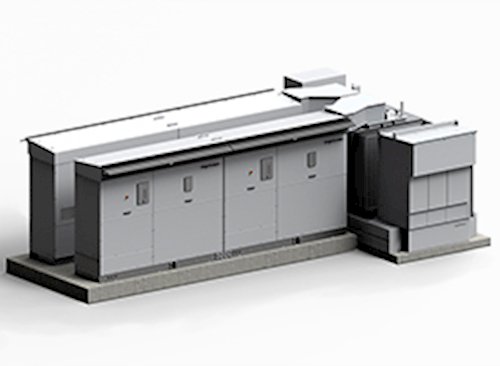Inverter stations are pivotal in shaping the renewable energy landscape, serving as the critical link between generation sources like solar arrays, wind farms, and the electrical grid. Their role is becoming increasingly vital as the world shifts towards a greener, more sustainable energy future. By enabling efficient, reliable, and intelligent integration of renewable energy sources into the grid, inverter stations are paving the way for a broader adoption of renewable energy. Here’s how they’re making an impact:

Enabling Efficient Energy Conversion
Inverter stations convert the direct current (DC) generated by renewable energy sources such as solar panels and wind turbines into the alternating current (AC) used by the electrical grid. This conversion is essential for the utilization of renewable energy in homes, businesses, and industry. Innovations in inverter technology are continually improving conversion efficiency, reducing energy losses, and increasing the overall efficiency of renewable energy systems.
Facilitating Grid Integration
One of the challenges with renewable energy sources is their variable and intermittent nature. Inverter stations help address this challenge by providing advanced grid support functionalities. Smart inverters, for example, can modulate the output power, regulate voltage, and maintain grid stability, even under fluctuating generation conditions. This ability is crucial for increasing the penetration of renewable sources in the energy mix without compromising the reliability of the electrical grid.
Supporting Energy Storage
As renewable energy generation becomes more widespread, the need for energy storage solutions grows. Inverter stations play a key role in integrating energy storage systems, such as batteries, with renewable energy sources. They manage the flow of energy to and from storage systems, ensuring that excess energy generated during peak production times can be stored and used when production decreases. This capability is vital for making renewable energy more consistent and reliable.
Enhancing Grid Resilience
Inverter stations contribute to grid resilience through their ability to provide ancillary services such as frequency and voltage regulation. By responding rapidly to changes in grid conditions, inverters can help prevent power outages and maintain grid stability. In some cases, advanced inverters can operate in a grid-forming mode, providing a stable grid voltage and frequency reference in areas without a strong grid presence or during grid outages, thus supporting the development of microgrids and enhancing local energy resilience.
Accelerating the Shift to Renewable Energy
By improving the efficiency, reliability, and integration of renewable energy sources, inverter stations are accelerating the transition to a more sustainable energy future. They enable utilities and energy providers to leverage a higher share of renewable energy, reduce dependence on fossil fuels, and decrease greenhouse gas emissions. Moreover, the ongoing advancements in inverter technology are continuously lowering the cost of renewable energy, making it more competitive with traditional energy sources.
Empowering Consumers
Inverter stations also empower consumers to become prosumers—producers and consumers of electricity—by enabling the integration of rooftop solar panels, home energy storage systems, and electric vehicle charging into the home energy system. Smart inverters allow for better management of energy production, consumption, and storage, giving consumers greater control over their energy use and contributing to energy independence.
In conclusion, inverter stations are not just facilitating but actively driving the adoption of renewable energy by bridging the gap between renewable energy sources and the grid’s operational requirements. Their role is central to the global energy transition, making renewable energy more accessible, reliable, and efficient. As technology advances, the potential of inverter stations to support a clean, sustainable, and resilient energy future continues to expand.
